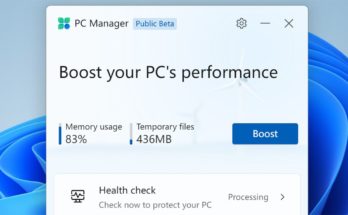
Hoje em dia, cada vez mais pessoas recorrem a seus telefones em busca de GPS e música em seus carros. E por que não? O Google Maps é muito melhor do que qualquer sistema coxo embutido em seu veículo. Digite o Android Auto: o melhor que seu telefone oferece, mas integrado à unidade principal de seu painel.
RELACIONADOS: O que é Apple CarPlay e é melhor do que apenas usar um telefone no carro?
Índice
O que é Android Auto?
Em sua forma mais simples, o Android Auto é exatamente o que parece: é o Android para seu carro. Não é uma versão ampliada da interface do telefone, mas deve parecer muito familiar para quem já usa o Android. Ele tem uma tela inicial, Google Maps integrado e suporte para uma série de aplicativos de áudio. Ele também usa controle de voz para basicamente tudo, para que você possa manter os olhos na estrada. Ele lerá seus textos para você e também permitirá que você responda, abra qualquer aplicativo, navegue até um local ou reproduza música com um simples comando de voz. Assim como o Android Wear é um companheiro Android que você usa no pulso, o Auto é um companheiro que vai no carro.
Android Auto comes in three forms. You can either buy a car that has Android Auto built-in (as many 2017 models do), purchase an aftermarket head unit and have it installed, or use the app version on your phone.
The first method is, of course, the easiest and arguably best way to use Android Auto. But if you’re not in the position to buy a new car (especially just to get Auto), then it’s also the most impractical. That’s where the second choice comes into play—several car stereo manufacturers are getting into the Android Auto game these days, with companies like JBL, Kenwood, and Pioneer leading the pack.
This is the direction I went with my 2013 Kia Sorento—I’ve had the car for a little more than a year, so getting a new vehicle just for the Auto experience was simply out of the question. A new head unit is a much more practical, though still fairly pricey, option. I ended up going with a Kenwood DDX9903S as my head unit, as it seemed to offer the best set of features and “future-proofing” for the money.

More recently, there’s also a third option: the Auto app for Android. As announced by Google in early 2016, Android Auto has made its way to phones. While the experience is very similar to that of a head unit, there are definitely some notable differences too. We’ll take a closer look at those down below.
For all the head unit options, the core of Android Auto is the same. Like any other head unit, you have a touch screen that gives you quick access to weather, directions to recently searched places, and currently playing music. The interface looks a lot like your Android phone, with dedicated buttons along the bottom for Maps, Phone, Home, Music, and the final button to exit Auto and return to the head unit’s primary interface.

Of course, Android Auto isn’t a standalone product—it’s essentially “powered” by your phone. You plug your phone into the car via USB, and the phone communicates with Auto through USB and Bluetooth at the same time–depending on what it’s doing. For example, it’ll play music over USB, but make phone calls over Bluetooth. And since your phone stays plugged in, it’s always charged.


Much like Android Wear, Auto has an app that runs on the smartphone, which does all the heavy lifting for you. As soon as you install the app and plug the phone into an Auto unit, it pairs the smartphone over Bluetooth and handles everything else over the USB connection—very little is required of the user to get started. This is the same app that runs the phone-based interface, but again, we’ll cover that in detail down below.
Once it’s all up and running, you can just toss the phone into the console, into your lap, or wherever. From this point forward, it will be rendered essentially useless—Auto will force itself into the foreground of the phone, removing access to all controls aside from Home and Back. The idea is to keep your eyes off your phone while driving. It’s smart.
The safety features don’t stop with the phone, either—Auto itself has certain safety features built-in. For example, it will only let you scroll through three pages (or so) in things like Pandora or Google Play Music if the parking brake isn’t engaged. This can make it incredibly frustrating to find a certain playlist or song, especially if it’s found on the bottom half of a list.

But that’s okay–the idea is for you to control everything with your voice. Instead of scrolling through Play Music, you’d tap the mic, then say “Play The End from In Flames on Google Play Music.” That way you can keep your hands on the wheel and your eyes on the road. (Sadly, there’s no “Ok Google” hotword like there is on some phones.)
Voice actions don’t really stop there, either. Since it’s essentially using Google Now, you can ask it pretty much anything you’d ask Now. Things like “How tall is Jimmy Butler?” or “What was Impending Doom’s first album called?” will work—basically anything with a simple answer that it can read back to you. If it’s more of a general Google Search (like “Chicago Bulls 2016-2017 schedule”), then it won’t really work on Auto. It’s just not designed for that.
And, as you’d expect, Navigation is awesome. Telling it to navigate to certain places has gone off without a hitch every time for me, and it has been a great experience. I got my head unit installed just before vacation, so I used navigation a lot during that time. It’s so nice to see a seven-inch screen with the map on it instead of just trying to fumble around with a phone.
Where Android Auto Falls Short
Android Auto isn’t perfect, of course. The biggest issue I ran into was with voice control. Sometimes it worked well, other times it had trouble understanding what I wanted. For example, if I say “Play my In Flames playlist on Google Play Music,” it has no idea what I want it to do—it’s not fully aware of things like playlists in Play Music. It sometimes has a hard time with Pandora stations, too: saying “Play Alice in Chains Radio on Pandora” doesn’t always result in my Alice in Chains Radio station being played, but instead the last-played station will just start—essentially, it just launches Pandora because it doesn’t know what to do with “play Alice in Chains radio.” I’ve had much better results with “Play Alice in Chains on Pandora.” I’d like to think it should be smart enough to know the difference, but maybe I’m asking too much.

There’s also the matter of cost. If you’re getting a new car, then you can include Auto on your “want” list and be done with it. But if you are installing Android Auto into your existing car, things get pricey quickly. Android Auto head units can cost $500 on the low end, and unless you’re familiar with how technical modern car audio systems can be, they essentially require a professional installation. So, at the end of the day, you’re looking at roughly $800 at a bare minimum to get into an aftermarket Auto unit–over $1000 if you want something that’s actually good (seriously–the low-end models come with old-school, crappy resistive touch screens. You don’t want that). If you don’t have a significant amount of disposable income, justifying that kind of price can be tough, if do-able at all.
So if you already have a phone and a cheap dock, why spend hundreds of dollars on an Android Auto unit?
Android Auto on Your Phone
The Android Auto app on your phone is similar to a head unit, with some noticeable differences. For example, most Auto head units have significantly larger displays than even the biggest Android phones. My Kenwood DDX9903S has a seven-inch display, versus the 5.5-inch panel on my Pixel XL. While that may seem like a relatively insignificant difference on paper, in practice it’s pretty substantial. Everything is much easier to see from the driver’s seat, especially compared to the phone in a dock.
As far as interface is concerned, the Auto phone experience is pretty similar to that of a head unit, though the layout is slightly different. It’s still designed to be easy to use in the car—it just gets out of the way to let you pay attention to what matters most: the road. I mean, there are lives at stake out there, so playing with your phone while driving is something that you should absolutely not be doing, under any circumstances. Fortunately, Auto running on the phone makes this much easier to avoid.

Once the app is launched, it forces a totally different experience than what you’re using to seeing on your handset: everything is huge, the controls are simplistic. The controls are at the bottom—much like on the Auto head unit—with all of the same options we saw above. If you flip your phone into landscape mode, however, the controls move to the right side.

Also like on the Auto car experience, the menu is found in the top-left corner. The contents of this menu will change according to whatever is running in the foreground. For example, if you’re using Google Play Music, the menu will contain links to your recent activity, playlists and the like; if you’re on the home screen, however, the menu will be where you’ll find the Settings and About menus. It’s very intuitive, albeit slightly more limited than the way menus work on head units.

Speaking of Settings, there are some interesting features found here, like an “Auto-reply” option, which will offer the option to reply to a text message with custom text while you’re driving. The default option is “I’m driving right now,” but you can modify this. There are also options to turn Wi-Fi off when Auto is running (to save battery), and to automatically launch Auto when a certain Bluetooth connection is detected. This can be super useful if you have a Bluetooth head unit in your car—once the phone is connected, Auto will take over. Very cool.

Where the Phone Experience Falls Short
Of course, there are downsides to just using your phone. Personally, I’ve had tons of issues with phones getting hot and even overheating when running music and navigation while charging in a dock on the dash. That’s just a lot going on at once, and the dash of the car is a stupid-hot place in the summer. I live in Texas, aka the surface of the sun, so that doesn’t help. The amount of times I’ve had phones reboot or shut down from overheating is astounding.

When it comes to multitasking and efficiency, Auto head units are superior to just using a phone in the car in almost every way. While on vacation, I used my head unit for navigation, music, texts, and phone calls—essentially everything it can do—constantly, and it never missed a beat. The music would automatically pause when a call or text came through, then start right back up afterwards. Navigation was on-point all the time, with constant traffic updates and notifications of faster routes as the became available. While the phone can do this, I often find it to be slower and clunkier—as the phone heats up (from doing multiple things at once with the screen on constantly), it just gets sluggish. Plus, the Auto head unit interface, while very similar, is just more efficient; for example, it has two menus on essentially every screen—one for the app, and one for the system—where the phone app has to combine everything into one menu.
In my opinion, Auto head units are—cost aside—better.
So Is an Android Auto Head Unit Worth It?
Ultimately, an integrated Android Auto system is better than just using your phone—but is it $1000 better? Simply put: no. The Auto app now provides 95% of everything that makes Android Auto head units so great, at 0 percent of the cost. You can’t really beat that.
But when it comes to actual use, I’d take a head unit every single time over just using my phone. After years of only using a phone for music and navigation in the car (over Bluetooth), my Auto head unit is a breath of fresh air.
So if you’re in the market for a new car, there’s no real reason to not get one with Auto built-in. It’s great to have. But if your current car doesn’t have it and you’re thinking about upgrading to an Android Auto head unit, it’s probably better to just…not. Your phone can basically cover the majority of the bases, and it’ll save you a grand. Really, there’s no comparison.


